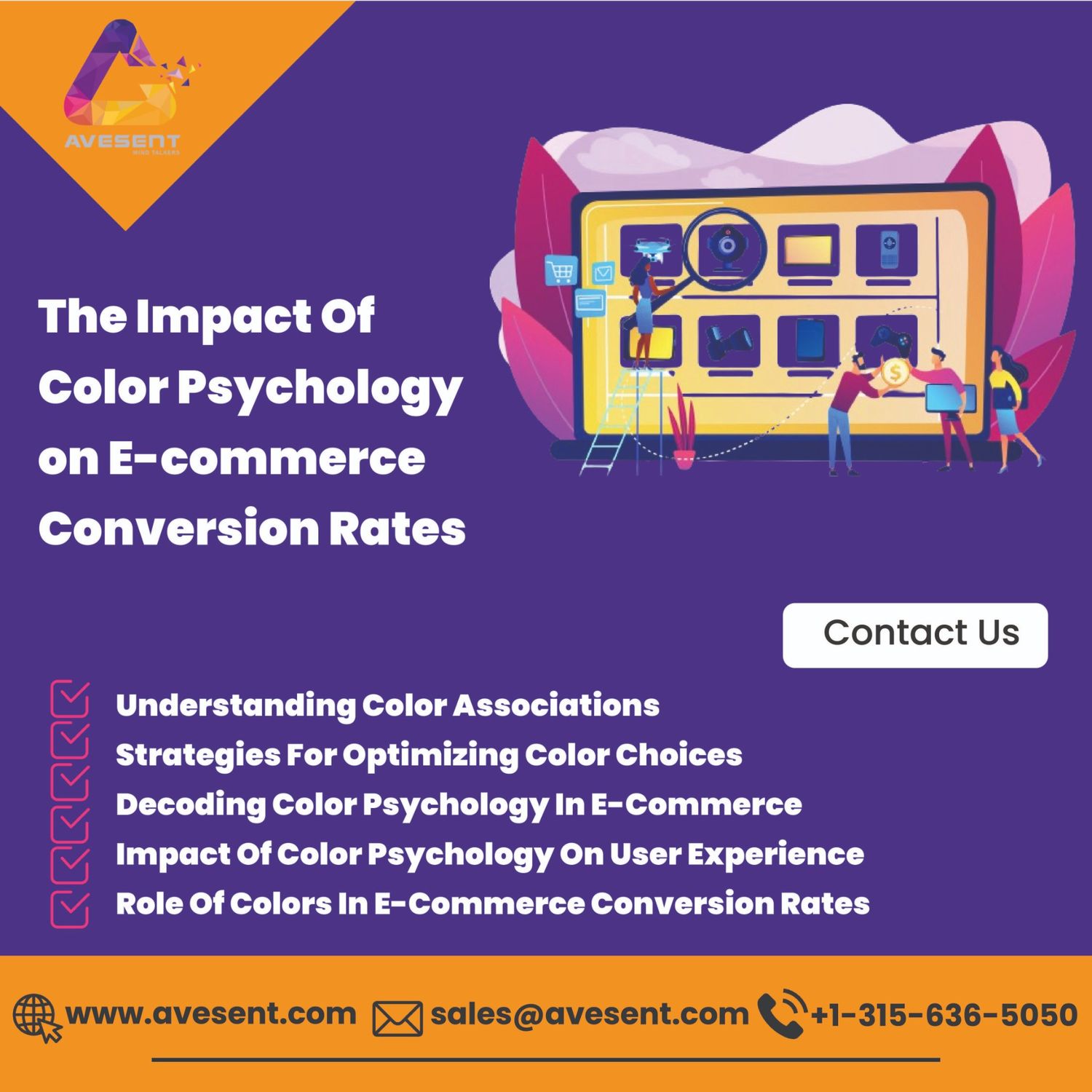Unveiling Color Psychology: Influence on E-commerce Conversion Rates and SEO
In the world of e-commerce, every design element matters, and color, in particular, holds a powerful influence on consumer behavior. Understanding the impact of color psychology isn’t just an aesthetic consideration; it’s a strategic move to enhance conversion rates. The interplay of colors can significantly affect user perception, engagement, and ultimately, conversion rates in the e-commerce realm. Let’s explore the profound influence of color psychology on e-commerce conversion rates and its relevance in SEO strategies.
Decoding Color Psychology in E-commerce
1. Importance of Color in Consumer Perception
Colors evoke emotions and influence perceptions. Different hues can convey specific meanings and elicit varied emotional responses from consumers.
2. Impact on Consumer Behavior
Color choices influence purchasing decisions. They can sway customer perceptions of trust, reliability, and product desirability, affecting conversion rates.
Role of Colors in E-commerce Conversion Rates
1. Creating Visual Hierarchy
Strategically using colors creates visual hierarchy. Highlighting specific elements with contrasting colors guides user attention and prompts desired actions.
2. Building Brand Identity
Consistent color schemes foster brand recognition. Establishing a cohesive color palette reinforces brand identity, aiding in user recall and trust.
Understanding Color Associations
1. Color Meanings and Associations
Different colors evoke specific emotions and associations. For instance, blue signifies trust, while red can convey urgency or excitement.
2. Contextual Relevance in E-commerce
Understanding color meanings in the context of products or services is crucial. Using appropriate colors aligned with the brand and product enhances user resonance.
Impact of Color Psychology on User Experience
1. Enhancing User Engagement
Appealing color schemes improve user engagement. Harmonious color combinations create visually pleasing experiences, prolonging user sessions.
2. Encouraging Call-to-Actions (CTAs)
Contrasting colors for CTAs prompt action. Colors that stand out drive attention to buttons or links, increasing click-through rates.
SEO Implications of Color Psychology
1. Impact on User Interaction Metrics
Positive user experiences influenced by color choices impact engagement metrics. Higher engagement signals relevance to search engines, impacting SEO rankings.
2. Brand Perception and SEO Signals
Consistent brand colors reinforce brand perception. Strong brand identities positively impact user behavior, contributing indirectly to SEO signals.
Strategies for Optimizing Color Choices
1. Audience-Centric Color Selection
Understand the target audience’s preferences. Choose colors that resonate with the demographic, culture, and brand positioning.
2. A/B Testing and Iterative Optimization
Conduct A/B tests to determine optimal color schemes. Iteratively refine colors based on user behavior and conversion data.
Utilizing Color Psychology for E-commerce Success
1. Color Harmony in Design
Create visually appealing designs with balanced color schemes. Harmonious combinations enhance the overall aesthetic and user experience.
2. Strategic Use of Accent Colors
Strategically use accent colors to draw attention. Accentuating specific elements directs user focus and improves conversion paths.
Conclusion
In the competitive landscape of e-commerce, color psychology isn’t just about aesthetics; it’s a strategic tool that impacts user perception, engagement, and conversion rates. By understanding the influence of colors on consumer behavior, e-commerce businesses can leverage color psychology to optimize conversion rates and enhance user experiences.
For e-commerce platforms aiming to elevate their conversion rates and SEO performance, embracing color psychology isn’t just a design tactic; it’s a strategic move that resonates with users, fosters trust, and influences purchase decisions.




